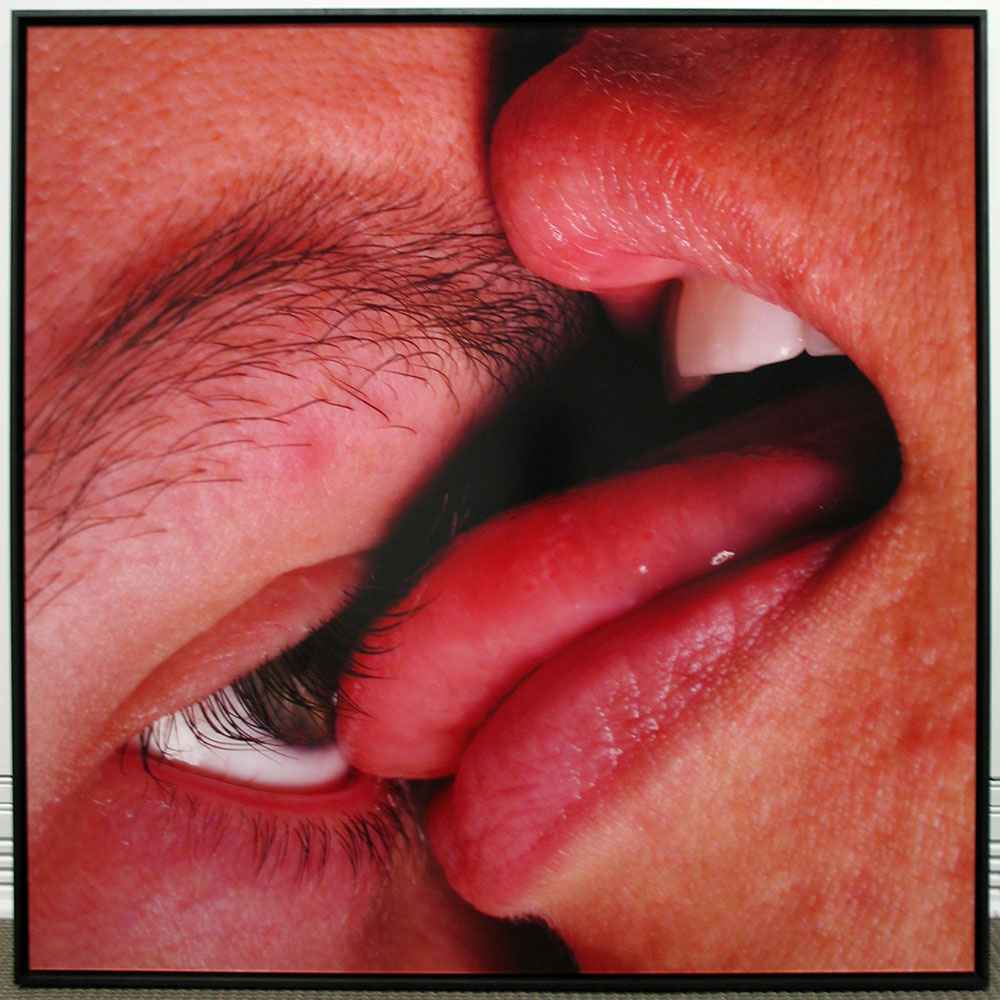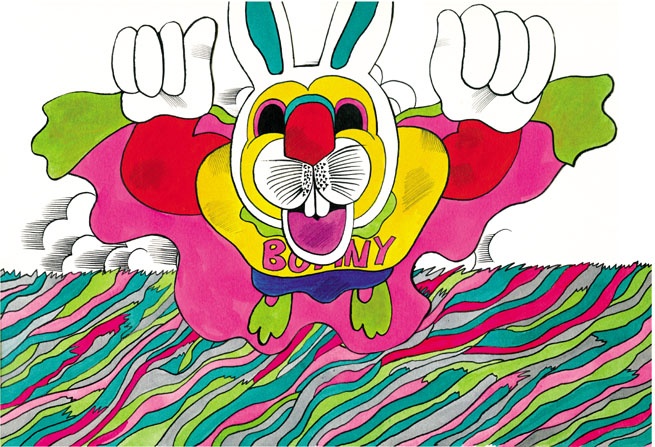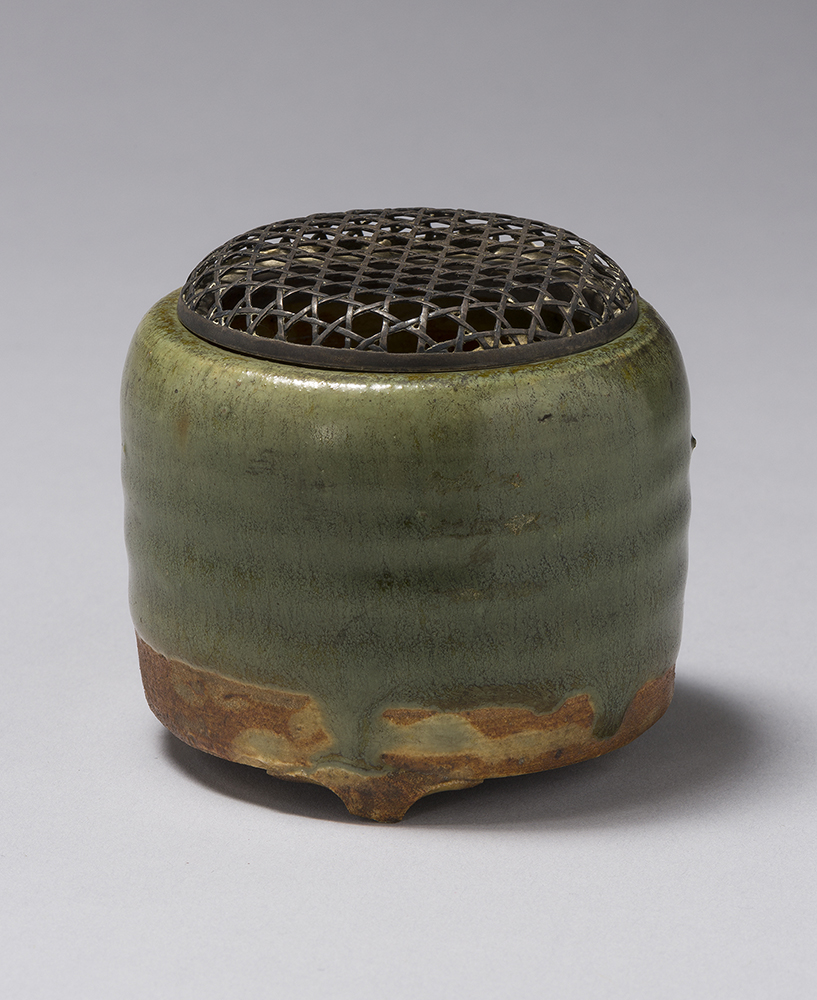More Love: Art, Politics, and Sharing since the 1990s
February 1, 2013 - March 31, 2013

The Ackland Art Museum presents the first major exhibition to investigate the ways in which contemporary artists have addressed love as a political force, as a philosophical model for equitable knowledge exchange, and as social interaction within a rapidly changing landscape of technology and social media.
Organized by consulting curator Claire Schneider, More Love: Art, Politics, and Sharing since the 1990s includes 48 works of art by 33 emerging and established contemporary artists who actively engage with love and the many ways it can be expressed through beauty, emotion, humor, texts, elaborate craft, sound environments, and interactive projects. For each of these artists, love is a significant tool or strategy that constitutes a creative practice built on generosity, inclusiveness, sharing, and questioning.
See images of More Love at the Ackland Art Museum
The Artists
From Jim Hodges’ large-scale curtain of silk flower petals to Julianne Swartz’s site-specific sound installations, from sculptural pieces by Janine Antoni and Louise Bourgeois to video work by Mona Hatoum, Tad Hozumi, Frances Stark, and others, the art in More Love invites, enacts, and reflects on multiple modes of expression, among them through touch, gifts, acts of service, and language.
Many of the works of art in More Love will allow the viewer to participate in meaningful ways:
Felix Gonzalez-Torres’s “Untitled” (Ross in L.A.) begins as a 175-pound pile of Fruit Flashers candy placed in a corner of a gallery. Visitors are invited to take a piece of candy and break standard museum rules by eating it while in the gallery. As pieces of candy are taken and consumed, and the pile shrinks in size*, the work may be seen as a portrait of Gonzalez-Torres’s soul mate, Ross Laycock, who died of AIDS. The artist makes a physical and emotional connection to the viewer, which was his intent, through ongoing gestures of giving and receiving intended for a wide audience: “I ask the public to help me, to take responsibility, to become part of my work, to join in.”
*Although replenishing the candy is an option each time it is exhibited, it will not be replenished in the case of More Love.
One of many recent works by Yoko Ono that focuses on global messages of peace and love,Time to Tell Your Love invites Ackland visitors to physically demonstrate their love, either singly or between two or more people, while in the Museum and to have their gesture photographed. Photos by participants are put on display as a tangible parts of Ono’s art work. In exchange for “proving their love,” participants receive a glass prism chosen for the exhibition by Ono.
Chris Barr will create a new web- and gallery-based commission, No Time for Love: Worldwide Regrets Counter for Misplaced Priorities. Visitors to Barr’s website will have the opportunity to document an occasion when they missed or opted out of an opportunity for human connection in the name of work productivity. Upon completion of an online form, the other party in the failed connection will be sent an email or a paper postcard. Information from participants’ submissions worldwide will be made visible at the Ackland, creating a scientific archive of decisions that prioritized other activities over love.
Gregory Sale’s Love for Love includes a trough of metal buttons imprinted with love-inspired texts written by individuals from the Chapel Hill area and surrounding region whose voices are less-often heard: recipients at a food bank, homeless individuals, and students in an English-as-a-second-language class. Visitors are invited to participate in the piece by taking a button, wearing it, noticing the sentiments of other buttons being worn, and looking for signs posted in and around Chapel Hill with other Love for Love texts. Through their circulation, Sale’s buttons are intended to foster dialogue, promote awareness of less visible segments of society, and invite tolerance, making the Museum what Sale calls a “space of service.” Read the Daily Tar Heel article about Gregory Sale’s art.
The intimate experiences of reading and then sharing a book—and, in particular, a book about love—are at the heart of Elsewhere’s 99 Books About Love on the Wall. Installed within the Ackland Museum Store, the piece presents books that share love as a theme, all carefully chosen and donated by North Carolinians and each personalized with a hand-written inscription.Elsewhere, a Greensboro, North Carolina-based non-profit made up of a self-described “living museum,” residency program, and collaborative learning laboratory, will make the donated books available to the public for a donation of $25 per book. Elsewhere will use the proceeds to support QueerLab, the organization’s youth-led platform for collaborative media experiments, digital storytelling, and exploration of GLBTQ experiences in the South.
First Love allows visitors, through a scheduled appointment, to have a two-hour, one-on-one session with a forensic sketch artist in which they describe the physical appearance of their first love. Artist Rivane Neuenschwander creates a situation that hinges on memory and communication, as the participant is asked questions that may be surprisingly difficult to answer – e.g. How far apart were her eyes? How wide was his chin? As each participant must reflect on their own personal history, they may find themselves feeling doubt, guilt, joy, and/or sorrow, among other emotions.
Prior to the opening of More Love, artist Lee Walton put out an open-call for participants in his piece, Father and Daughter View the Exhibition. During every one of the 43 days that More Love is on view, a father-daughter pair will enter the Museum at 4:00 PM, view the exhibition, and exit at precisely 4:30 PM. By its nature, Walton’s piece makes an everyday event into art, but because the father-daughter pairs will not be identified in any way, the piece blurs the lines between spectacle and the quotidian. Walton’s piece draws attention to the experiences that make us human and the heightened awareness of moments shared with loved ones.
In March 2013, Chalk, by Puerto Rico-based artists Jennifer Allora and Guillermo Calzadilla, will be available at a public location to be announced. Twelve five-foot sticks of chalk will invite passers-by to express themselves in a very public way, with statements and musings about love being encouraged. With each chalk piece weighing nearly 100 pounds to start, cooperative efforts will be required to make love communications possible.
Off site, Felix Gonzalez-Torres’ “Untitled” (1991) is presented as a series of six billboards in the Triangle area. The image on each billboard is the same: a black and white photograph of a just laid-in bed. The image creates both a space for dreaming and a statement about private and public space. For Gonzalez-Torres, even though this was his bed, it was always a public space, since as a gay man his personal space was legislated by the 1986 Supreme Court ruling that upheld that homosexual acts were not protected under the “right of privacy.” While his own personal life clearly informed his practice, he created a strategy to allow the viewer to be an equal partner in creating meaning, meaning that could shift and be legitimate in all its permutations.
In addition to the above-mentioned works, art by Luis Camnitzer, Anne Collier, Tracey Emin, Hadassa Goldvicht & Anat Vovnoboy, Sarah Gotowka, Sharon Hayes, Emily Jacir, Chris Johanson, Miranda July and Harrell Fletcher, Antonio Vega Macotela, Lynne McCabe, Laurel Nakadate, Dario Robleto, Kateřina Šedá, and Gillian Wearing will be included in the show.
The Catalog
More Love: Art, Politics, and Sharing since the 1990s is accompanied by a fully-illustrated, 240-page catalog including essays by consulting curator Claire Schneider, Jonathan Katz, Shannon Jackson, and Dario Robleto, among others. It also includes additional materials by Yoko Ono, Gregory Sale, Janine Antoni, Hadassa Goldvicht, and Miranda July.
Stop by or contact the Store (919-962-0216, acklandstore@unc.edu) to purchase your copy.
More Love is made possible by the James Keith Brown and Eric Diefenbach Fund for Contemporary Art, Art Mentor Foundation Lucerne, NC Arts Council (with funding from the National Endowment for the Arts), The Seymour and Carol Cole Levin Foundation, and the William Hayes Ackland Trust.
Janine Antoni, American, born 1964, Mortar and Pestle, 1999, chromogenic print. 48 x 48 inches. Edition of 10. © Janine Antoni. Courtesy of the artist and Luhring Augustine, New York.


